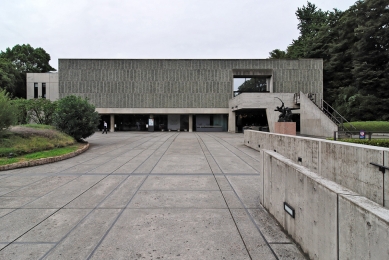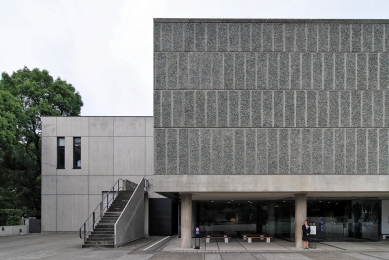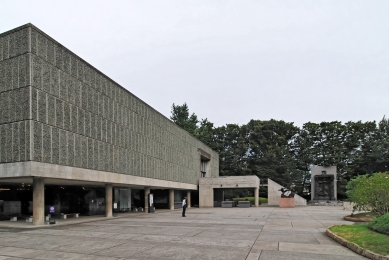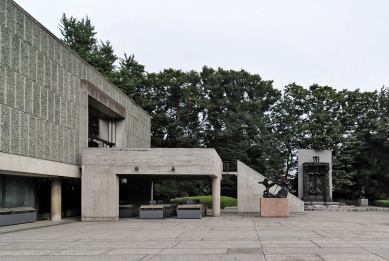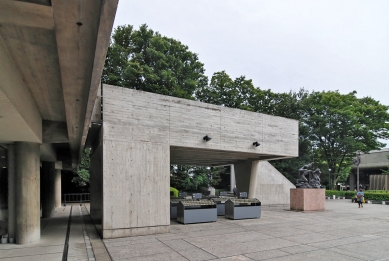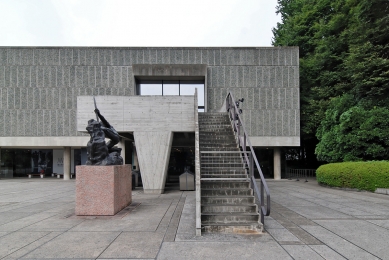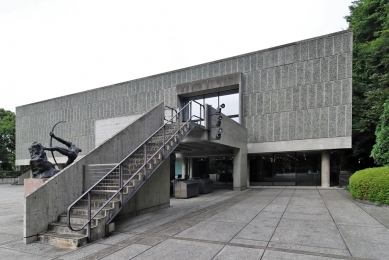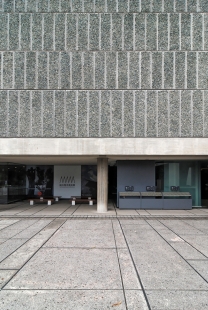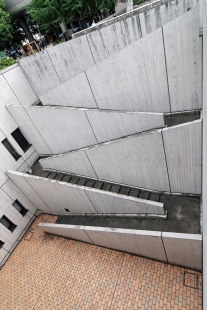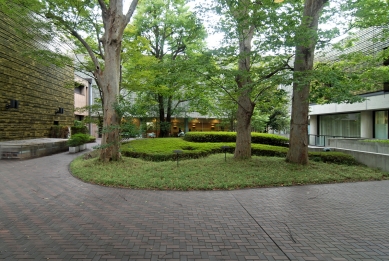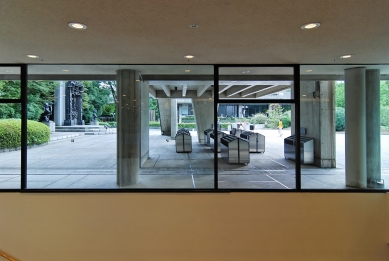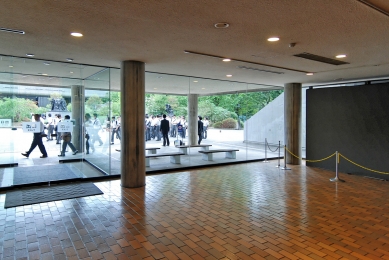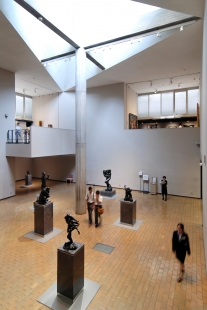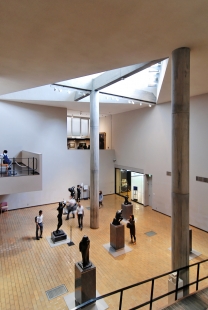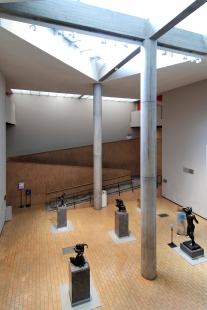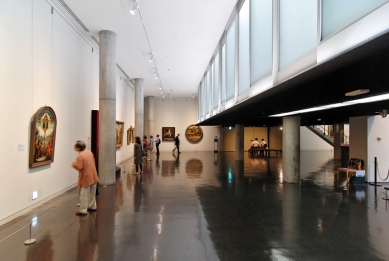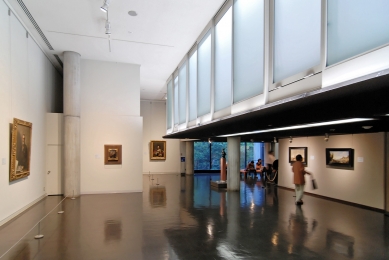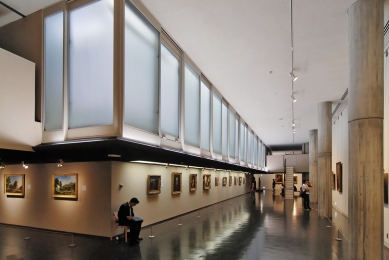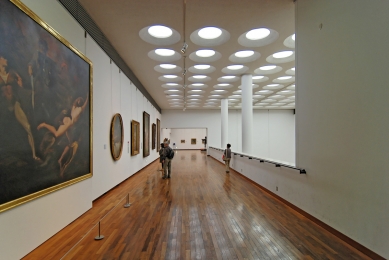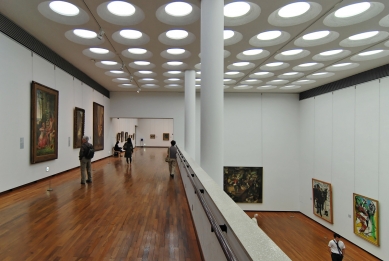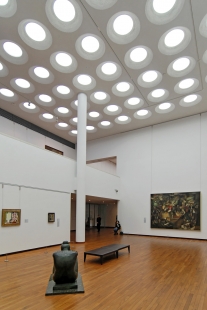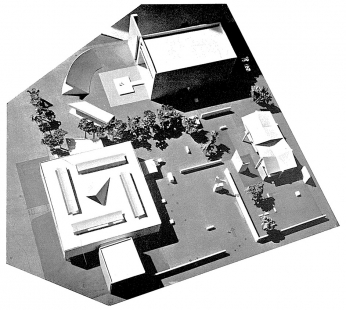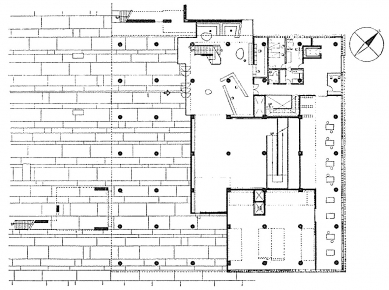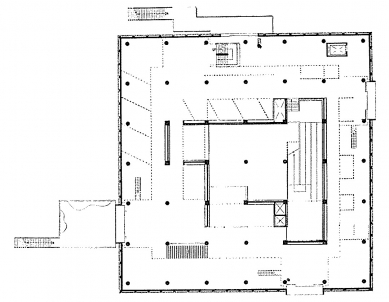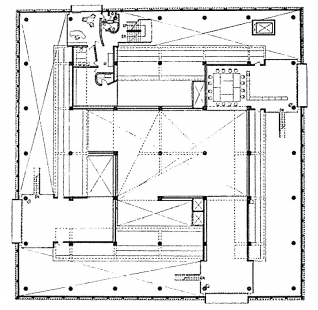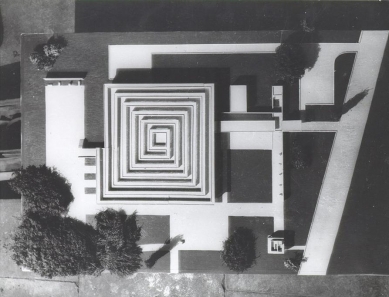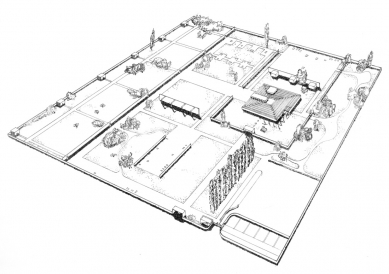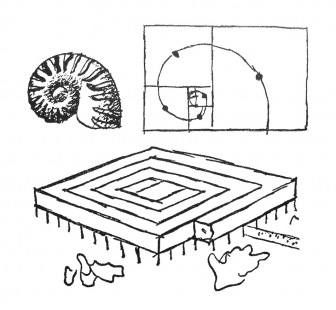A wealthy Japanese resident in Paris, M. Matsukata, had amassed an imposing collection of Impressionist art, both painting and sculpture. During the war of ‘39 this collection was considered as a war prize by the French government. After successful negotiations, the collection was restored to the Japanese government on the condition that it be housed in a new building in Tokyo which shall be called “The National Museum of Fine Arts of the West”, with the intention of acquainting the Japanese public, in a scientific manner, with the past, present and future evolution of western art, starting with Impressionism.
The Japanese government called upon Le Corbusier to construct this museum. They provided a site in a park already occupied by the Museums of Natural History, of Fine Arts, of Science, etc... This site is covered with beautiful trees; it is located on the edge of a plateau dominating Tokyo and profiting by an unlimited panorama of the city.
Le Corbusier, pursuing studies dating back more than 25 years, has installed on this site a version of the "square spiral museum“. But he is accompanying it with a Pavilion for Temporary Exhibitions and a building dedicated to the theatre and to theatrical experiments which he long ago christened: “Box of Miracles". This ensemble constitutes, according to the desire of the Japanese government, a cultural center. It follows directly from studies made in 1950 for the site of the Porte Maillot in Paris, an attempt which came to grief through certain impatiences and voracities ...
Here in Tokyo, the Museum itself was executed by two Japanese architects, who, in 1928, in 1931 and finally after the war had worked for a long time at 35 Rue de Sèvres: Maekawa and Sakakura.
The composition, although well unified, allows to each of the buildings, which are so fundamentally different, the integrity of its own character.
This museum in Tokyo is of the type of Museums of Unlimited Growth invented by Le Corbusier in 1930 and which has appeared on his plans for many cities.
One enters the ground floor between the columns. The door is in the center of the building, opening onto the Hail which contains the central column of the museum. After walking up the ramp one arrives at the level of the museum itself 16’5” above the ground; the height of this room is about 16’5”, which is divided in two in certain areas: 7’5” + 7’5” forming structural braces in the shape of a swastika. This swastika always leads the visitors to the central point of the Museum and thence down the ramp towards the exit. At each branch of the swastika, on the other hand, located on the same level as the halls of the Museum, are exit doors leading to the garden or to the park.
Willy Boesiger : Le Corbusier: Oeuvre Complete, vol.7, p.182-187


